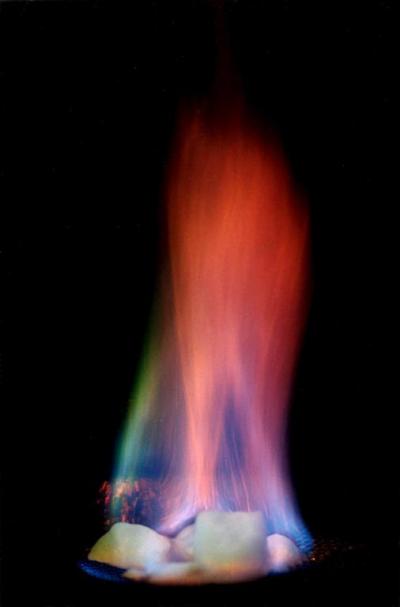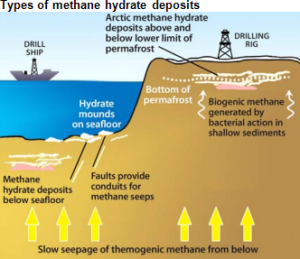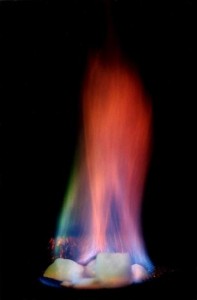If you are like my family, avid watchers of the new version of the nighttime soap opera, Dallas, you know that Christopher Ewing is trying to harvest natural gas from gas hydrates, an icy combination of water and methane under high pressure and low temperatures found at the bottom of the ocean. Well from television drama to reality, on Tuesday of this week Japan Oil, Gas and Metals National Corporation and Japan’s National Institute of Advanced Industrial Science and Technology announced that they had extracted natural gas from gas hydrates found about 80 kilometers (50 miles) off the Atsumi Peninsula, directly south of Tokyo.
For Japan, a country that has little in the way of fossil fuel resources, the ability to mine gas hydrates to extract methane represents a major step in establishing energy self sufficiency. With total deposits within the territorial waters estimated to contain about a 100 years supply of natural gas, this is a significant technology breakthrough. Currently the team at the site is running a two week test to demonstrate it can continuously produce methane gas from tapping frozen hydrates on the seabed.
The significance of this effort by Japan cannot be underestimated. Worldwide gas hydrate reserves run to 10,000 trillion cubic feet. Compare that to U.S. shale reserves estimated at 827 trillion cubic feet and you can see the potential if we harness natural gas from hydrates frozen on the seabed.
How do gas hydrates form? On the seabed from methane seeps coming from cracks in the Earth’s crust. Under the intense pressure and cold, the methane combines with water molecules to form ice that literally can burn (see image at the bottom of this article).
Other sources of gas hydrates lie in permafrost, an issue that climate scientists have frequently pointed to as a concern should rising temperatures melt the frozen Arctic leading to massive releases of methane, 21 times more potent than CO2 as a greenhouse gas.
No one as of yet has developed a commercial extraction technology for getting natural gas out of permafrost. That’s not because no one has tried. Back in 2002 a jointly funded venture between the same Japanese company involved in the current announcement, and Canada’s government announced that they were able to extract methane from permafrost near Inuvik in the Northwest Territories. The problem, however, was net energy gained did not offset energy required to extract the methane.
So there is real science behind the storyline in Dallas. Will Christopher Ewing succeed? Will gas hydrates beat out oil and create a new fortune for Ewing Energy? And will we ever learn who shot JR again?











